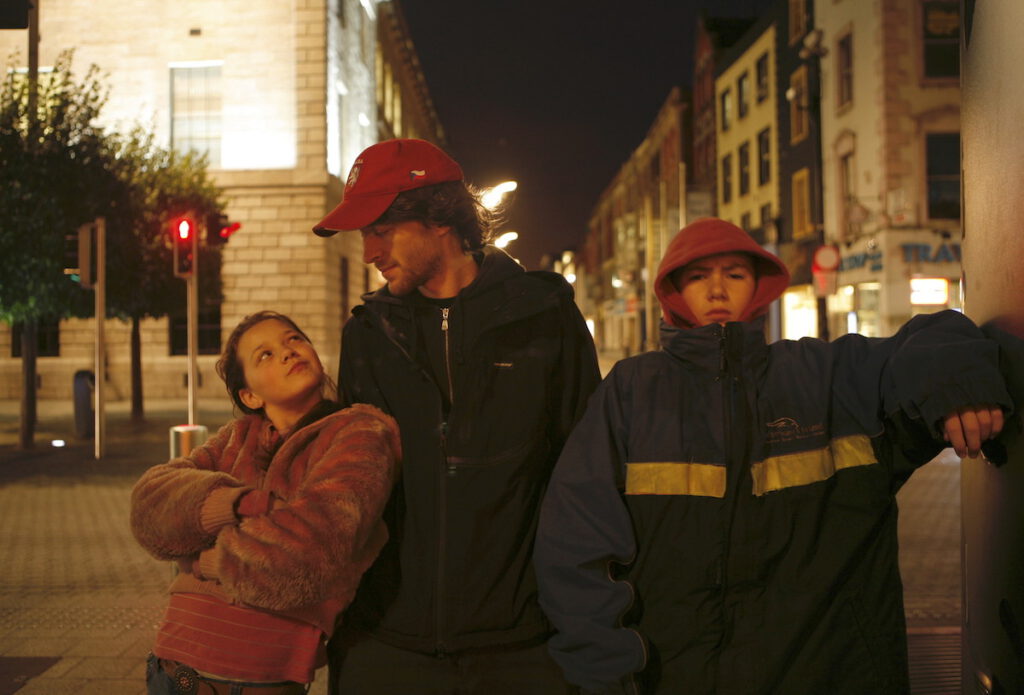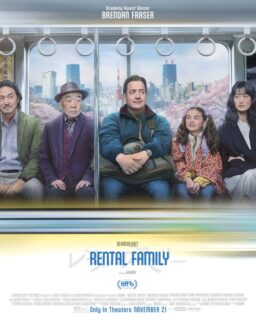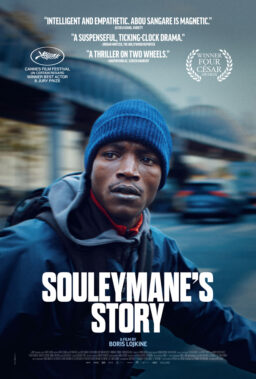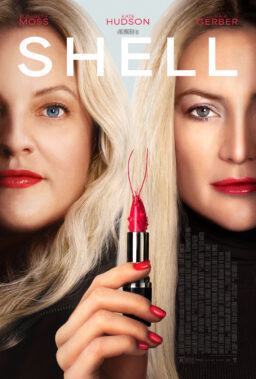“Not a word was spoke between us, there was little risk involved / Everything up to that point had been left unresolved / Try imagining a place where it’s always safe and warm / Come in, she said / I’ll give ya shelter from the storm”—Bob Dylan
Desert island movies have always been an intriguing category to contemplate, prompting us to select the works of cinema we would most desire to accompany our extreme isolation. In this crucial time of social distancing, this concept has become much more of a tangible reality. When I turned 34 late last month, my girlfriend and I couldn’t celebrate with friends and family, so we decided to fill our day with cherished films instead, and my first choice was a no-brainer: Lance Daly’s marvelous indie “Kisses.” This year marks the tenth anniversary of its U.S. theatrical run, following its 2008 world premiere in Ireland, and as soon as I stumbled upon the picture, it instantly became one of my all-time favorites.
I honestly can’t imagine a better quarantine viewing option that this tale of two children, Kylie (Kelly O’Neill) and Dylan (Shane Curry), who escape their abusive households—portrayed in stark black and white—thus enabling them to share a night of independence on the streets of Dublin. In the midst of having adventures both endearing and nightmarish, the pair find much-needed shelter not in any contrived deus ex machina but in one another. Few films have paid as soulful an homage to Bob Dylan, the inedible genius who continues to create provocative art reflective of the culture from which it sprung, as evidenced by his newly released track, “Murder Most Foul,” about a nation in paralysis. As his voice starts to infiltrate Daly’s narrative, so does the inclusion of color, which the filmmaker incorporates with masterful subtlety.
The performances from O’Neill and Curry, both of whom had never made a film before, are flat-out extraordinary in their unmannered authenticity. Daly himself has had experience in front of the camera, including a bit part in Alan Parker’s rollicking 1991 gem “The Commitments,” a film Tarantino loved so much that he borrowed its opening titles number (“Treat Her Right”) for his own credits sequence in last year’s “Once Upon a Time…in Hollywood.” Daly recently took time to share with RogerEbert.com his memories of making this wonderful film as well as the lessons it taught him about how to conjure magic onscreen.
We must begin with “The Commitments,” where you had a small role as a harmonica-playing kid.
It was a really important film for us all in Dublin when Alan Parker came here to make it. It was a big deal and a big event, in part because it had been adapted from the novel by a local writer, Roddy Doyle. Everybody had already read the book and was talking about it. Alan Parker was also known by everyone as the guy who directed “Fame,” so everybody who had ideas about doing something creative tried out for the movie, one way or another. “The Commitments” really caught what that moment felt like here. I had already been pursuing acting at that time prior to realizing that I had no hope as an actor. I played lots of parts over those years as a teenager, but that’s the only thing that exists of it now. I’m glad it’s survived, and it’s great to be in it. For many years, I cringed about it, but you get to a point, I suppose, where you’re glad to be a part of a movie that people are still watching.

Did your background as an actor at all inform your approach to directing Kelly O’Neill and Shane Curry in “Kisses”?
I understand the fear that is experienced by actors. When you’re directing people who act for a living, it’s useful to have acted yourself, and it’s even more useful to have given up acting because you became convinced that you didn’t have whatever that special thing was. It means you really have a bit of respect for those who are doing it, and you can appreciate whatever special quality they have. Directing children and non-actors is a whole different thing, actually. It’s interesting because they tend to trust you much more once you get into a flow. In some ways, it’s great because you can really try to nail the nuance of something and get it to where you want it to be.
In other ways, it’s hard because it’s much more work requiring a lot of micromanagement when getting something to a certain place, whereas actors will have their own process that enables them to carry some of the load. So it’s two different worlds. In “Kisses,” the kids were just phenomenally natural actors. Whatever it is that you do for the camera that brings the magic, they both just had it. It was in them. They were tricky characters, the two of them, but they were just naturals—complex, lively, equipped with fully active senses and always fascinating to watch.
What served as the initial inspiration for “Kisses”?
I began making the film in 2006 and it didn’t come out in America until 2010, so the things I remember from 14 years ago aren’t necessarily true. I do recall starting off with an idea about two kids running away from home together, and initially it wasn’t a boy and a girl, it was actually two boys. I suppose that was based on dreaming about running away a lot when I was kid. I packed my bag a few times but never got it together to go. When it became a romance and a road movie, that’s when it came to life for me. What seems to obviously make sense about a movie’s construction only reveals itself once its production has completed. The idea I dreamed up for “Kisses” just seemed like an interesting little mix of a road movie, a Christmas movie and a romance, but a pre-teen romance—where characters are falling in love but don’t have any way of expressing that to each other, other than in cinematic terms. That’s where I started.
I was driving around, thinking about some of the locations we were going to shoot in along the canal, such as a field of electricity pylons where they jump on the barge. There was a Bob Dylan cassette stuck in my tape player, so I had it on permanent repeat, and that’s how his music started working its way into the film, and ultimately became a cornerstone of it. As for the mixture of black and white and color, that was a product of the Digital Intermediate (DI) technology that had just come out at that time, where you could scan a film and manipulate the image. I saw it as a new tool that I could use.
The other logic behind my visual approach stemmed from the fact that the first movie I made was in black and white. I went with that because black and white film stock was half the cost of the color stock, so it made sense. In the pre-DI days, when you didn’t have an art department, it was very hard to get the correct color palettes and manage the look. Black and white provides a much easier way to stylize your movie, and I wanted to repeat that look for the bleak daylight scenes.

There’s a gorgeously composed shot that holds on Kylie’s face as she sits alone on the sidewalk, connecting her and Dylan in a shared moment of isolation.
We filmed that on one of the last nights of shooting, and we had run out of crew members. I think it was just me and a camera assistant and a P.A. who were left. I had just found this doorway with the colorful light, and in the film, it’s meant to look like a crowded shopping street with all these legs walking past Kelly. In actuality, we were shooting it at three in the morning, so it was deserted. It’s just the same two people going back and forth to create the busy street. But the reason why that shot is so special is because of Kelly. It’s a massive lesson I keep having to learn, unfortunately. When I’ve been cutting movies since then, I decided to figure out what are the essentials here because I seemed to keep missing the target.
I realized that it comes down to two things, one being the right actor in the right part. The other is what you cut from and what you cut to. Everything else is important, but those are the two things that you will live or die on, and if you get the two of those right, you’ll get away with everything else. You’ll get away with a patchy story, the wrong music, bad photography—as long as you have those two things. Kelly is the perfect person to have made that shot come alive, and it’s about what her face is able to convey. I really adored the two of those kids because you could turn a camera on them and they brought the magic. They really did what you want your star to do.
In the behind-the-scenes footage contained on Oscilloscope’s excellent DVD release of “Kisses,” there’s a palpable sense of play amongst the kids and the crew.
Well I’d love to say that I allowed them to do that, but if the kids hadn’t had that much space, it would’ve broken the film. You couldn’t control them. Anything that’s that alive, you can’t control it. Since then, I’ve tried to control things and found that if you control it, you kill it, in a way. Ideally, your actors are that alive, and you let them live while getting into a rhythm with them. I love those outtakes you mentioned because they’re just comprised of the kids cursing at me and giving me a hard time. But it’s a back and forth. Everybody who made movies for a living had a hard time working on “Kisses” because it didn’t follow the rules for how you make a movie.
Waldemar Kalinowski, our production designer, had a phrase which I thought was great and I’ve used since. He told me, “When you have your cast and your script and you know what sort of movie you’re making, you don’t sit down and say, ‘Okay, how do we make movies, and let’s apply that to this.’ The question should always be, ‘How do we make this movie?’” The rules change depending on what you need to accommodate. If you put those two children into a normal workday, you wouldn’t have anything because they can’t work that way, so the film was all built around them. That is very hard for people who’ve learned how to do things a certain way. But on the movies I’ve made since, a conversation I keep forgetting to have with myself is to stop trying to make things a certain way simply because that’s how people who make films for a living have done them in the past. I only direct a movie every couple of years. These guys are onset every day, and they have a particular way of doing things, but if you are trying to get somewhere new, those techniques won’t always succeed.

With “Kisses” and my most recent film, “Black ’47,” what I’m trying to do is find a space in the pantheon of movies I love that isn’t occupied by another movie. I hate easy comparisons. You don’t want to slot in something that makes the viewer go, “Ah, that’s from that movie.” You want the film to occupy its own space. That’s what I was trying to do with “Kisses,” but it’s not a good strategy if you want to make a living out of making movies because it’s very hard to follow. No one knows what sort of movie you’re making. People who are branded as “the horror guy” have a good chance of making more horror movies. “Kisses” was such a hard film to follow up because I didn’t even know what it was afterwards. All the scripts I got offered after were about children in tricky situations, but none of them made sense as a follow-up, so I think that’s why I struggled to find my next project. It’s hard to find a lot of other films to compare “Kisses” to. “Black ’47” is the first one since then where I felt confident, as a director, in knowing what I was trying to make.
As endearing a film as “Kisses” is in many respects, it also has sequences that are as taut as anything in “Black ’47,” such as when Dylan escapes from his house or holds onto the back of a speeding car.
Because I don’t live in Hollywood and we don’t make genre movies here [in Ireland], I like to think of making films in the following way. First, I try to set something up that resembles the real world. I try to get the audience really invested in the characters, like they’re looking in a window on something that is believable and relatable. But then, we don’t stay in that world because art house movies are often so punishing a lot of the time, and as a result they can alienate regular mainstream moviegoers. Once everyone is in and invested, then you take them into a movie, and that was part of the idea behind the color as well. “Kisses” starts as a kitchen sink verité type of film, and then morphs into a movie where kids go on an adventure. It starts as a film, and then becomes a movie, basically.
Those two sequences you mentioned are quite escapist, especially the car chase, but you’re still trying to keep them in the real world. They are self-conscious movie adventure sequences that we attempted to ground in the aesthetic of the real, so it was a balance. There was one shot I needed for that chase that I never got when Dylan is holding onto the car. I just needed to see the wheels in his Wheelies skates tearing along on the ground, but we couldn’t get it.
For me, it works because there is a shot of Dylan’s wheels clicking into place once he grabs on to the car. The rest of the sequence seamlessly plays on the audience’s imagination without them realizing it.
Yeah, it’s held together just by a thread.

Casting Stephen Rea as the Dylan tribute artist, “Down Under Dylan,” is such an inspired choice.
My dad was a lifelong Dylan fan, so I was sort of tickled to do something for him that would somehow involve Dylan. I went to see Dylan play in Dublin, and I saw Stephen—whom I had done a film with previously—up in the balcony, in the fancy seats. I texted him afterwards and said, “Hey, I saw you at the gig!”, and he said, “Yeah, it was brilliant, wasn’t it?” I said, “Yeah, you don’t look unlike the great man yourself,” and he said, “Well, the similarity has been remarked upon…” I was reminded of that when Bob Dylan started showing up in the writing of “Kisses” and wondered whether I could get Stephen in there.
On the night we shot his scene, he came down and said, “You know, I met Dylan once. He’s a really tiny guy.” In order to get himself in the mood, he pulled up the collars on his leather jacket and walked around in the costume truck going, “I’m just a wee tiny guy, you know? I’m just a wee tiny guy goin’ out for a smoke.” [laughs] I still have a picture of him doing that. The other roles I’ve had Stephen in have been bigger parts that we’ve talked about together, but in this case, he just turned up on the night and did it. When we were filming his scene with the kids, he had a cigarette and the smoke was going into Shane’s nose. Shane was trying to subtly blow it away while they were playing the scene, and then Stephen said, “I’m sorry, I’m sorry, but he keeps blowing on me!” We had to send Shane away and do Stephen’s single without Shane there, and so Shane decided that he hated Stephen. [laughs]
The film’s ending ranks among the most perfectly crafted I’ve seen, and when I first told you that, you said that the scene “did not come easy.” How so?
It’s one of the few sequences in the movie that I decided had to be done as it was written. It had to be constructed exactly in that way in order to deliver a big punch. And there were lots of financiers and such who read the script and said, “You know it’s easy to write this stuff down, not so easy to actually shoot it so that it conveys these subtle meanings,” so I was suitably motivated to nail it. When we were playing at festivals, I started really relying on it. Everywhere we screened the film, the audiences started crying during the end scene. A lot of the movie is very freewheeling and from the hip, but in the case of this scene, everything had to be precise—the look, the feel, the eyeline, the slow motion were all very conscious decisions. It would be really wonderful if making movies could be like that all the time, where you aim for a particular vision and actually end up with it. It’s so rare. Oftentimes, you’re immediately going, “Oh, that didn’t work, but this part is good.” It’s really gratifying to hear that the ending worked as it was intended, and that it had left such a big impression on you.
We had to wait for the light to be perfect, and we spent about two days shooting that scene, though we probably shouldn’t tell anyone that. Everything else is a miracle that it happened, but here, we knew that we had to get it right, and the kids were prepared. The day that Kelly had to cry, she turned up onset having not slept the night before. She said it was because she couldn’t sleep and her head was wrecked about this or that. She was blaming her mother, but actually, we realized that she may have put herself through that because she knew that she was going to have to get really upset the next day. She just got herself into the mess that she needed to be in. In that final scene, Shane turned up, and I just couldn’t believe it when I looked at him. He looked so wrecked that you believed that he had really slept all night in a doorway. It was like we were in sync at that stage and honestly, he probably just stayed up playing his X-box that night, but it looked as if he had been put through a war.

If I’m trying to sell somebody on something that I’m going to do, that would be a scene I’d tell them to check out. When we showed the film in Galway, “Shelter from the Storm” played over the end credits, and it just brought everybody back to that nice moment on the canal, where Kylie and Dylan are first heading to Dublin as the song is heard on the soundtrack. I fought and fought and fought, and they just wouldn’t give us the fucking song for the end roller. Bob or his manager decided that they didn’t want the song on the end credits as a matter of principle, so I had to accept that, but then I was really crushed when I saw it used on the end credits of some big movie many years later. So there was a number, we just weren’t anywhere near it.
I think it’s equally powerful to have the end credits initially unfold in silence, since it allows us to linger in the feeling of that great ending. Nothing upstages it.
That’s a good silver lining, I’ll take that. What other movies have you thought had great endings?
The first one that comes to mind is Céline Sciamma’s “Portrait of Lady on Fire,” another love story with a rich understanding of music and mise-en-scène.
I’m definitely gonna watch that. I think I remember that our ending only really worked when we held the smiles back in the cut. When they were just looking at each other, you knew what existed between them. Without the smiles, it suddenly felt like a whole other level of romance, like this is serious. The reason that ending works is because no one has to say anything. It relies on everything the audience has seen that has taken place in the movie between these two characters. By the end, you totally understand what that feeling in the air is between them. You’re involved in their chemistry and you’re able to go with the swell of emotion without anything needed to be said. The impact of that moment definitely has to do with whatever has already been planted. As a filmmaker, you shouldn’t spell that out for the audience, but rather, just allow them to be there.
It’s pure visual storytelling conveyed primarily through nuanced expressions, which could also be said about the ending of “Portrait.”
I didn’t realize it was ten years since the American release of “Kisses,” and it’s really nice to hear that it’s being fondly remembered. The kids are all grown up now, and I’ll make sure to mention that to them. At the end of the day, what you want to be doing is making a movie that people are still watching ten years from now. Otherwise, in a way, you didn’t quite hit the mark. I keep getting tempted to go back and do another movie with them both. It could horribly fall on its face, but I’m still thinking about it.
“Kisses” is currently available via Oscilloscope and Amazon.
Header photo caption: Kelly O’Neill, Lance Daly and Shane Curry on the set of “Kisses.” Courtesy of Lance Daly.












